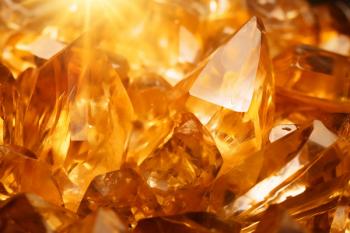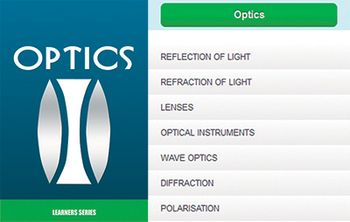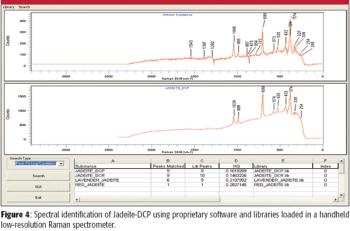
Triethylaminium picrate (TEAP) crystals were developed using a slow evaporation solution growth method and then characterized for their feasibility in optoelectronic and other uses.


Triethylaminium picrate (TEAP) crystals were developed using a slow evaporation solution growth method and then characterized for their feasibility in optoelectronic and other uses.

Optical emission spectroscopy (OES) reveals cathode sheath parameters using Stark polarization spectroscopy of neon lines in Grimm-type glow discharge sources (GDSs).

To understand the physicochemical processes that occur during plasma expansion, scientists experimented on aluminum nitride (AlN) plasma using optical emission spectroscopy (OES).

Igor Gornushkin and colleagues at BAM Federal Institute for Materials Research and Testing in Berlin, Germany studied the feasibility of using optical spectroscopy as a control method for laser metal deposition, and he recently spoke to us about this work. Gornushkin is the 2022 recipient of the Lester W. Strock Award from the New England Chapter of the Society for Applied Spectroscopy (SAS).

A frequency comb is a laser source, with evenly spaced narrow lines, potentially useful for spectroscopy applications, particularly as a source or for alignment of the wavelength axis.

The Optics Physics app is designed to serve as a pocket dictionary of all optical characteristics and their analyses, with formulas to find various parameters.

Dr. Richard R. Hark, a professor in the Department of Chemistry at Juniata College in Huntingdon, Pennsylvania, discusses his work with LIBS in applications such as forensic science, conflict minerals, and geochemical fingerprinting.

The choices for LIBS hardware are discussed in detail, particularly lasers and spectrometers, and the trade-offs between cost, size, and performance are illustrated.

Lasers and optics continue to comprise a thriving and emerging market in the field of spectroscopy, with new breakthroughs occurring at a rapid pace. Here to discuss the latest developments in these areas are Alexander Bolshakov, Applied Spectra; Phil Taday, TeraView; and Rob Morris, Ocean Optics, Inc.

Joining us for this discussion are Rob Morris, Ocean Optics, Inc.; Alexander Bol'shakov, Applied Spectra; and Elizabeth Illy, Cobolt AB.

Joining us for this discussion are Rob Morris, Ocean Optics; and Paul Gelsinger-Austin, Petra Lepke, and Samuel Sadoulet, Edmund Optics.

Researchers at the Massachusetts Institute of Technology have developed light-detecting fibers that act like a flexible camera when woven into a web.

The author discusses the use of filters in optical microscopy and the advantages that have been gained as a result of developments in filter technology.

Joining us for this discussion are Lisa EO Mueller, Wavelength Electronics; Walter Burgess, Power Technology, Inc.; Rob Morris, Ocean Optics.

In this column, Guest Columnist Philip Taday explores the use of terahertz spectroscopy for tablet coating analysis.

Improvements in engineering and manufacturing processes and tools have rapidly lowered the cost to make products, and to distribute them. The next generation of optical sensing technologies will offer a framework for the creation and testing of new business models based upon the distribution of knowledge and service. In fact, this concept of "distributed sensing" already has emerged in networked systems monitoring various aspects of the environment.

Joining us for this discussion are Nicolas Gayraud, Renovalia Energy and Rob Morris, Ocean Optics.

The author discusses what the future holds for the field of optics.

In the last installment of this column, I discussed prisms. In this installment, we will consider their curved cousins.

Chinese scientists have built the world's most powerful optical telescope in a research base of the National Astronomical Observatories, Chinese Academy of Sciences (NAOC) near Beijing, expecting to unravel the mysteries of the universe.

This month's Technology Forum looks at the topic of optics and lasers and the trends and issues surrounding it. Joining us for this discussion are Rob Morris, Director of Marketing, Ocean Optics, Inc.; and Phil Taday, Applications Group Leader, fromTeraView Limited.

A prism is an optical component that serves one of two major functions: it disperses light, or it modifies the direction (and sometimes polarization) of light. In some cases, a prism has more than one function, and they are discussed here.

Raman spectroscopy is going through a major revolution with the continuous introduction of new fiber-based modular systems for low-resolution applications. More and more scientists are discovering what Raman spectroscopy can do for their research, education, and commercial applications thanks to the low costs and flexibility this new technology is providing. New applications and prospects are presented each day, and it is important to understand the advantages and limitations that this user-friendly analytical technique can provide to address these opportunities with a scientific approach.

This month's Technology Forum looks at the topic of Optics/Lasers and the trends and issues surrounding them. Joining us for this discussion are Eric Bergles, with BaySpec, and Rob Morris, with Ocean Optics.

What has been the single-most important development in the field of optics in recent years?